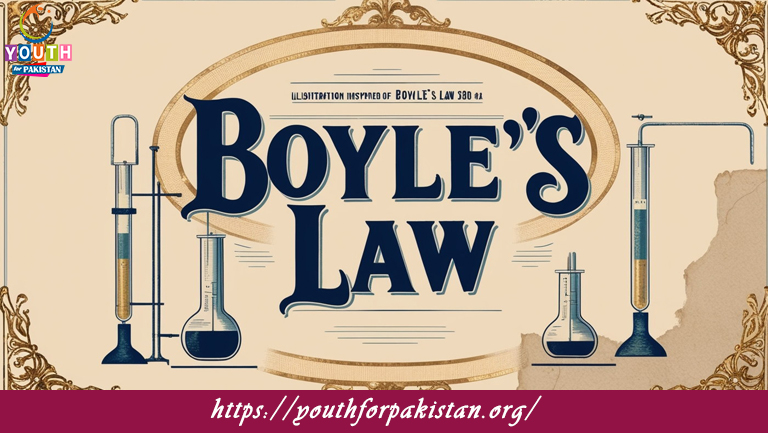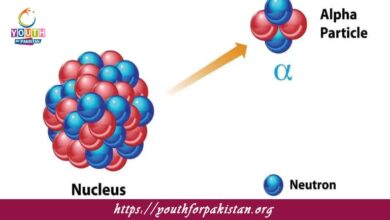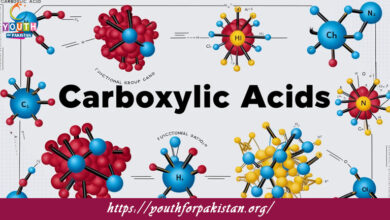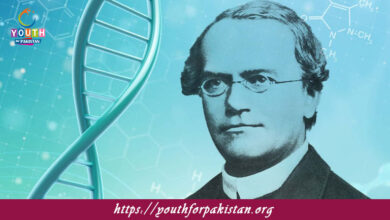Boyle‟S Law MDCAT MCQs with Answers

Welcome to the Boyle‟S Law MDCAT MCQs with Answers. In this post, we have shared Boyle‟S Law Multiple Choice Questions and Answers for PMC MDCAT 2024. Each question in MDCAT Chemistry offers a chance to enhance your knowledge regarding Boyle‟S Law MCQs in this MDCAT Online Test.
Boyle’s Law states that the pressure of a gas is inversely proportional to its volume when temperature is constant. This can be expressed as:
a) P ∝ V
b) P ∝ 1/V
c) PV = constant
d) P/V = constant
If the volume of a gas is halved while keeping the temperature constant, what happens to the pressure?
a) It remains the same
b) It is halved
c) It is doubled
d) It is quadrupled
In Boyle’s Law, if the initial pressure and volume of a gas are P₁ and V₁ respectively, and the final pressure and volume are P₂ and V₂ respectively, the law can be mathematically expressed as:
a) P₁V₁ = P₂V₂
b) P₁/V₁ = P₂/V₂
c) P₂/V₂ = P₁/V₁
d) P₁/V₂ = P₂/V₁
If a gas has a volume of 5 L at a pressure of 2 atm, what will be its volume at 4 atm, assuming constant temperature?
a) 2.5 L
b) 5 L
c) 10 L
d) 20 L
Boyle’s Law is valid for which type of gases?
a) Only ideal gases
b) Only real gases
c) All gases
d) Only gases at high temperatures
If the pressure of a gas is increased from 1 atm to 3 atm, what happens to its volume, assuming constant temperature?
a) It triples
b) It remains the same
c) It is reduced to one-third
d) It is doubled
In Boyle’s Law, the temperature of the gas must be:
a) Constant
b) Increasing
c) Decreasing
d) Variable
If the initial volume of a gas is 8 L and the initial pressure is 2 atm, what will be its volume when the pressure is reduced to 1 atm?
a) 4 L
b) 8 L
c) 12 L
d) 16 L
The relationship between pressure and volume of a gas in Boyle’s Law is:
a) Directly proportional
b) Inversely proportional
c) Independent
d) Exponentially proportional
Which of the following graphs represents Boyle’s Law?
a) Volume vs. Pressure
b) Volume vs. Temperature
c) Pressure vs. Temperature
d) Volume vs. Moles
At constant temperature, if the volume of a gas is doubled, what happens to its pressure?
a) It is doubled
b) It is halved
c) It remains the same
d) It quadruples
Boyle’s Law can be used to calculate the final volume of a gas if:
a) The final temperature and initial pressure are known
b) The initial volume and final temperature are known
c) The initial and final pressures and volumes are known
d) The number of moles of gas and temperature are known
If the pressure of a gas is increased from 2 atm to 6 atm and the initial volume is 4 L, what will be the final volume?
a) 1 L
b) 2 L
c) 3 L
d) 6 L
Which gas law is combined with Boyle’s Law in the Ideal Gas Law?
a) Charles’s Law
b) Avogadro’s Law
c) Gay-Lussac’s Law
d) Dalton’s Law
What happens to the volume of a gas when its pressure is decreased at constant temperature?
a) The volume increases
b) The volume decreases
c) The volume remains constant
d) The volume first decreases, then increases
If the volume of a gas is 15 L at 1 atm pressure, what will be its volume at 4 atm pressure?
a) 3.75 L
b) 6 L
c) 15 L
d) 60 L
Boyle’s Law is a special case of which gas law?
a) Ideal Gas Law
b) Charles’s Law
c) Avogadro’s Law
d) Dalton’s Law
In Boyle’s Law, if the pressure of a gas is halved, what happens to the volume of the gas?
a) It remains the same
b) It is halved
c) It doubles
d) It is reduced to one-fourth
At constant temperature, the product of pressure and volume for a given amount of gas is:
a) Constant
b) Directly proportional to temperature
c) Inversely proportional to temperature
d) Directly proportional to the number of moles
If the volume of a gas is 2 L at a pressure of 5 atm, what will be its pressure if the volume is changed to 4 L?
a) 2.5 atm
b) 5 atm
c) 10 atm
d) 20 atm
Boyle’s Law is primarily used to describe the behavior of gases under conditions of:
a) High temperature and high pressure
b) Low temperature and high pressure
c) Constant temperature and varying pressure
d) Varying temperature and varying pressure
If a gas at 1 atm pressure has a volume of 12 L, what will be its volume if the pressure is reduced to 0.5 atm?
a) 6 L
b) 12 L
c) 24 L
d) 48 L
Which of the following best illustrates Boyle’s Law in real life?
a) A balloon shrinking when taken to higher altitudes
b) A balloon expanding when heated
c) A gas increasing its volume when compressed
d) A gas decreasing its pressure when heated
When using Boyle’s Law, the temperature of the gas must be:
a) Known
b) Constant
c) Variable
d) Ignored
If a gas has a volume of 6 L at a pressure of 3 atm, what will be the pressure if the volume is changed to 2 L?
a) 2 atm
b) 3 atm
c) 6 atm
d) 9 atm
The pressure of a gas is 4 atm and its volume is 10 L. What will be the new pressure if the volume is reduced to 5 L?
a) 2 atm
b) 4 atm
c) 5 atm
d) 8 atm
Which of the following equations is derived from Boyle’s Law?
a) PV = nRT
b) P₁V₁ = P₂V₂
c) V/T = constant
d) P/T = constant
In Boyle’s Law, if the volume of a gas increases by 50%, what happens to the pressure?
a) It increases by 50%
b) It decreases by 50%
c) It remains the same
d) It decreases to 1/1.5 of the original pressure
Boyle’s Law is most applicable to gases at:
a) High pressures and low temperatures
b) Low pressures and high temperatures
c) High pressures and high temperatures
d) Low pressures and low temperatures
What happens to the volume of a gas if its pressure is increased from 2 atm to 8 atm?
a) The volume remains the same
b) The volume is halved
c) The volume is reduced to one-fourth
d) The volume is doubled
Which gas law describes the inverse relationship between pressure and volume at constant temperature?
a) Charles’s Law
b) Avogadro’s Law
c) Boyle’s Law
d) Gay-Lussac’s Law
If the pressure of a gas is 6 atm and its volume is 3 L, what will be its volume if the pressure is decreased to 2 atm?
a) 1 L
b) 2 L
c) 6 L
d) 9 L
Boyle’s Law assumes that gas particles have:
a) Significant intermolecular forces
b) No volume
c) Negligible intermolecular forces
d) High compressibility
If the initial volume of a gas is 10 L at 2 atm, what is its final volume when the pressure is increased to 5 atm?
a) 2 L
b) 4 L
c) 5 L
d) 10 L
Which of the following conditions does NOT apply to Boyle’s Law?
a) Constant temperature
b) Constant number of moles
c) High pressure
d) High temperature
If a gas has a volume of 12 L at 1 atm pressure, what will be its volume if the pressure is reduced to 0.2 atm?
a) 2.4 L
b) 6 L
c) 12 L
d) 60 L
Boyle’s Law can be used to predict the behavior of a gas when:
a) Temperature and volume are changed
b) Pressure and temperature are changed
c) Volume and pressure are changed
d) Temperature and the number of moles are changed
If the pressure of a gas is 2.5 atm and its volume is 4 L, what will be its pressure if the volume is reduced to 2 L?
a) 1.25 atm
b) 2.5 atm
c) 5 atm
d) 10 atm
The temperature must be kept constant in Boyle’s Law to ensure:
a) That the gas remains ideal
b) That the gas pressure does not change
c) That the volume and pressure are inversely proportional
d) That the number of moles of gas remains constant
Boyle’s Law is used in which of the following applications?
a) Calculating the molar mass of a gas
b) Predicting the behavior of gases in chemical reactions
c) Determining the solubility of gases in liquids
d) Analyzing the relationship between gas volume and temperature
If you are interested to enhance your knowledge regarding Physics, Chemistry, Computer, and Biology please click on the link of each category, you will be redirected to dedicated website for each category.





